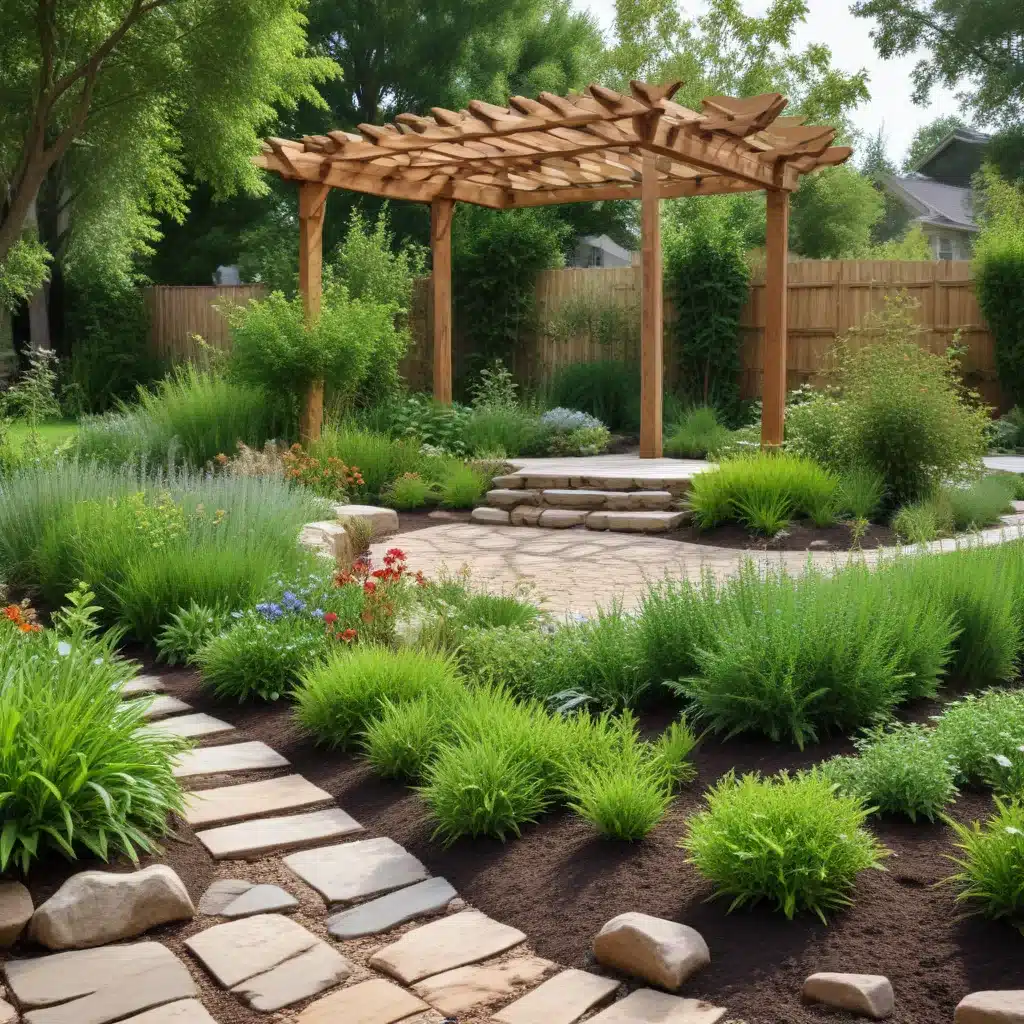
Embracing Sustainable Landscaping: A Greener Approach to Outdoor Spaces
As a seasoned construction professional and interior designer, I’ve witnessed the growing trend towards more sustainable and eco-friendly home renovations. One often overlooked aspect of this movement is the importance of sustainable landscaping. Your backyard can be transformed into a lush, vibrant oasis that not only enhances the beauty of your home but also contributes to a healthier environment.
In this comprehensive guide, I’ll share practical tips and in-depth insights on how to revitalize your backyard with sustainable landscaping solutions. From the selection of drought-resistant plants to the incorporation of water-efficient irrigation systems, we’ll explore a range of strategies to create an outdoor space that is both visually stunning and environmentally responsible.
Designing for Sustainability: Principles and Practices
When it comes to sustainable landscaping, the foundation lies in the design process. By carefully considering the unique characteristics of your property and the local climate, you can create a landscape that thrives with minimal maintenance and resource consumption.
Plant Selection: Embrace Native and Drought-Tolerant Species
One of the cornerstones of sustainable landscaping is the selection of plant species that are native to your region. These plants are well-adapted to the local climate and soil conditions, requiring fewer resources such as water and fertilizers to thrive. Explore the benefits of native plant selection in your landscape design.
Water-Efficient Irrigation Systems
Efficient water management is crucial for sustainable landscaping. Consider incorporating smart irrigation technologies that monitor soil moisture levels and adjust watering schedules accordingly. Drip irrigation systems and rainwater harvesting solutions can also help minimize water waste.
Mulching and Composting for Soil Health
Maintaining healthy soil is essential for a thriving, eco-friendly backyard. Incorporate organic mulch around your plants to retain moisture, suppress weeds, and gradually improve soil quality. Composting your yard waste can further enrich the soil, reducing the need for synthetic fertilizers.
Embracing Permeable Surfaces
Traditional hardscaping materials like concrete and asphalt can contribute to stormwater runoff and impede natural groundwater recharge. Instead, explore permeable options such as pavers, porous concrete, or gravel that allow water to percolate into the soil, reducing the strain on local water systems.
Minimizing Lawn Areas
While a lush, green lawn can be aesthetically pleasing, traditional turf grass often requires significant water, fertilizer, and maintenance. Consider reducing the size of your lawn and incorporating drought-tolerant groundcovers or native meadow plantings that require fewer resources.
Revitalizing Your Backyard: Sustainable Landscaping Ideas
Now that we’ve established the foundational principles of sustainable landscaping, let’s dive into some inspiring ideas to breathe new life into your outdoor space.
Transforming Patios and Walkways
Hardscaping elements like patios and walkways play a crucial role in your landscape design. Opt for permeable pavers or natural stone that allow water infiltration and blend seamlessly with your surrounding plantings. Incorporate strategic placement of these elements to create a cohesive, low-maintenance outdoor living area.
Embracing Edible Landscaping
Why not transform your backyard into a productive, edible oasis? Incorporate fruit trees, berry bushes, and vegetable gardens that not only contribute to a sustainable food source but also add visual interest and biodiversity to your landscape.
Introducing Pollinator-Friendly Plants
Bees, butterflies, and other pollinators are essential for a thriving ecosystem. Allocate a portion of your backyard to a pollinator-friendly garden, featuring a diverse array of native flowers, shrubs, and trees that provide nectar and habitat for these vital creatures.
Incorporating Sustainable Water Features
Water features, such as a recirculating fountain or a natural-style pond, can add a soothing ambiance to your backyard while also supporting local wildlife. Explore designs that minimize water consumption and use renewable energy sources, such as solar pumps, to power these elements.
Embracing Vertical Gardening
Limited space doesn’t have to limit your sustainable landscaping ambitions. Vertical gardening techniques allow you to maximize your planting area by growing vines, trailing plants, and even edible crops on walls, trellises, or arbors.
Integrating Renewable Energy Sources
Take your sustainable backyard to the next level by incorporating renewable energy sources, such as solar-powered lighting or a small-scale wind turbine. These elements not only reduce your environmental impact but also showcase your commitment to sustainability.
Maintaining a Thriving, Eco-Friendly Backyard
Sustainable landscaping is an ongoing journey, and proper maintenance is crucial to ensure the long-term health and vitality of your outdoor oasis. Here are some tips to keep your backyard thriving:
Commit to Organic Lawn and Garden Care
Minimize the use of synthetic fertilizers, pesticides, and herbicides, which can harm the environment and disrupt the natural ecosystem. Instead, opt for organic alternatives and sustainable lawn care practices.
Practice Regular Composting and Mulching
Continuously replenish the soil with nutrient-rich compost and apply a layer of organic mulch around your plants to retain moisture and suppress weed growth.
Engage in Mindful Pruning and Trimming
Carefully prune your plants and trees to maintain their health and aesthetic appeal, while avoiding over-trimming, which can stress the vegetation.
Monitor and Adjust Irrigation Systems
Regularly inspect your irrigation systems to ensure they are functioning efficiently and make adjustments as needed to optimize water usage.
Incorporate Native Plant Replacements
As your landscape matures, be prepared to replace any non-native or high-maintenance plants with more suitable, locally adapted species.
Embracing the Future of Sustainable Landscaping
By incorporating these sustainable landscaping solutions into your backyard, you’ll not only create a visually stunning outdoor oasis but also contribute to a healthier, more eco-friendly environment. As a construction professional and interior designer, I’m thrilled to see the growing emphasis on sustainable practices in the home renovation industry.
If you’re ready to revitalize your backyard with sustainable landscaping, I encourage you to explore the comprehensive services offered by local providers who specialize in transforming outdoor spaces into verdant, low-maintenance havens. Together, we can build a greener future, one backyard at a time.


